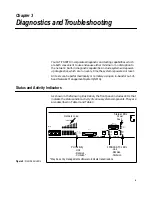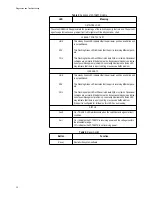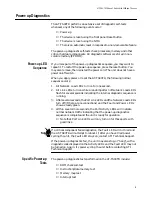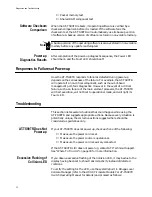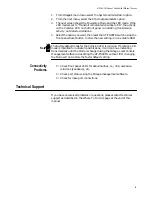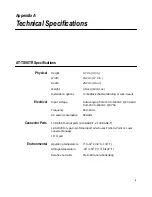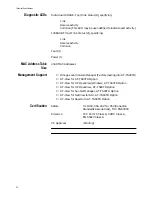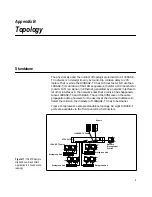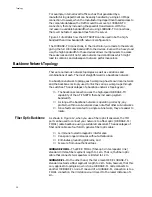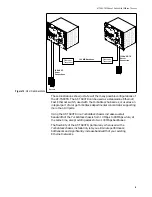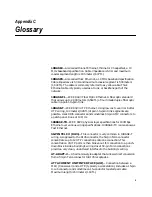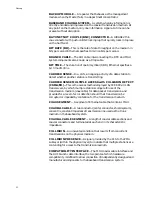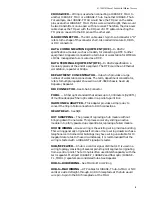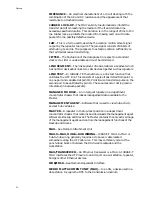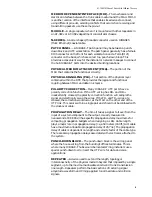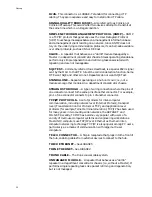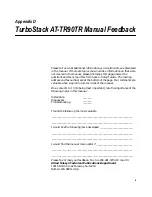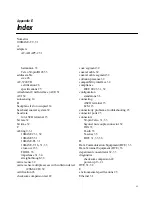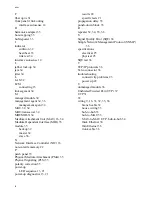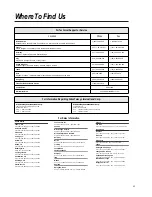
AT-TS90TR 10Base-T Switch With 100Base-T Access
35
MEDIUM DEPENDENT INTERFACE (MDI)—The mechanical and
electrical interface between the trunk cable medium and the MAU. MDI-X
is another version of the interface that enables like devices to connect,
using different pin-outs, avoiding conflicts that occur when receiving and
transmitting packets use the same pin-out.
MODULE—A single repeater when it is mounted with other repeaters in
an AT-36Cx or AT-36Ex department concentrator chassis.
N-SERIES—A barrel shaped, threaded connector used on 10BASE5
(thick Ethernet) coaxial cable.
PATCH PANEL—A 10BASE-T patch panel may be between a punch-
down block and UTP workstation. The patch panel generally has a female
RJ45 connector on the front for each workstation and a Telco (RJ21)
connector on the back, which are wired to a punch-down block. This
provides a convenient way for the installer or network manager to connect
the hub 10BASE-T ports into the desired building locations.
PHYSICAL MEDIUM ATTACHMENT (PMA)—The portion of the
MAU that contains the functional circuitry.
PHYSICAL SIGNALING (PLS)—That portion of the physical layer
contained within the DTE that provides the logical and functional
coupling between MAU and data link layers.
POLARITY CORRECTION—Many 10BASE-T UTP ports have a
polarity correction function. If the UTP wiring has RD- and RD+
inadvertently crossed, the polarity correction function will sample the
signal and electrically swap the wires. If the TD- and TD+ wires are
crossed, the correction would occur at the MAU on the other end of the
UTP link. This occurs within a single pair and should not be confused with
the cross-over cable.
PROPAGATION DELAY—The time it takes a signal to travel from the
input of a system component to the output. Usually measured in
nanoseconds. IEEE 802.3 has specific propagation delay maximums for
computing propagation budgets when designing a LAN. Cable length
plays a major role in propagation delay. [i.e, a 50 meters (164 ft.) AUI cable
has a maximum allowable propagation delay of 257 ns.] The propagation
delay of cable is dependent on length and velocity factor of the cable type.
There are also propagation delays associated with electronics attached to
the system.
PUNCH-DOWN BLOCK—The punch-down block is the wiring panel
where the house wiring from the building’s offices terminates. This is
where many 10BASE-T hubs would be located. Wiring installers use a
special punch-down tool to insert the UTP wire for data and voice
applications.
REPEATER—A device used to extend the length, topology, or
interconnectivity of the physical medium beyond that imposed by a single
segment, up to the maximum allowable end-to-end trunk transmission
line length. Repeaters perform the basic actions of restoring signal
amplitude, waveform and timing applied to normal data and collision
signals.

